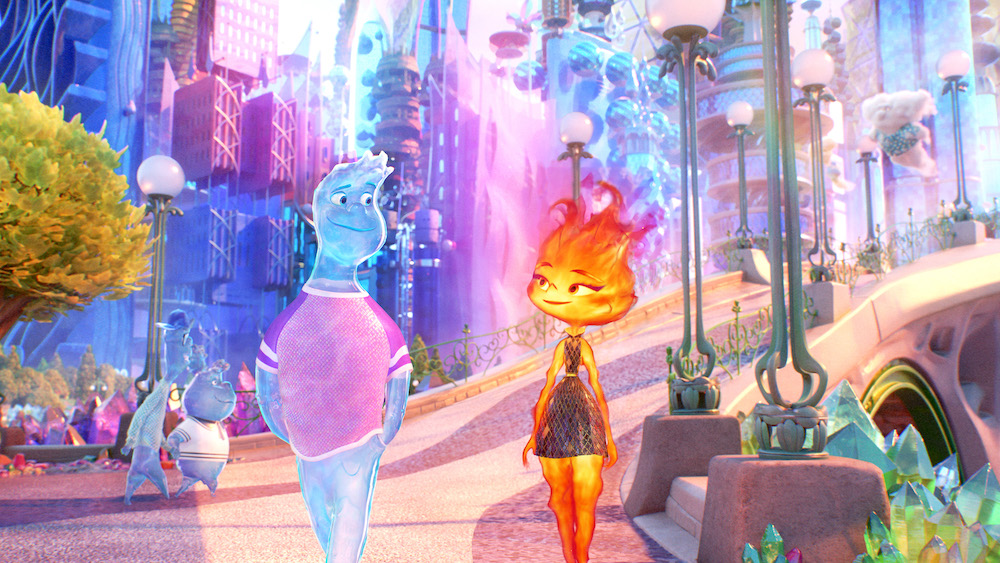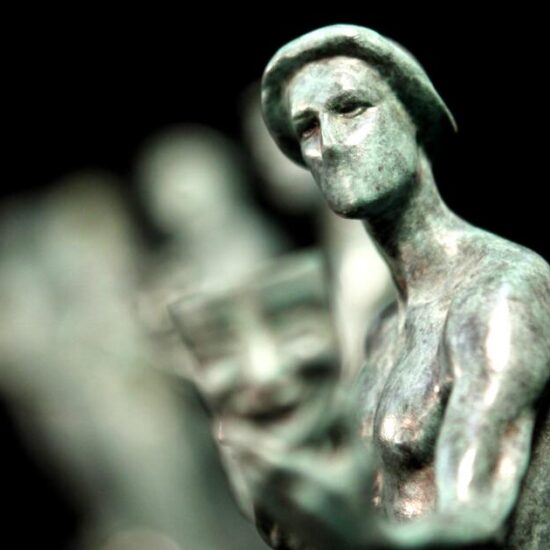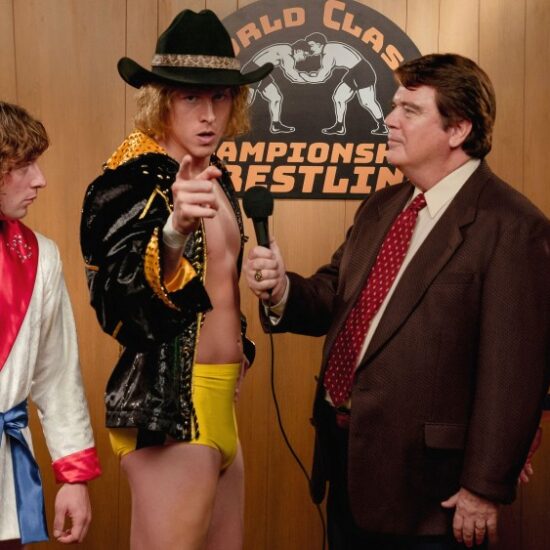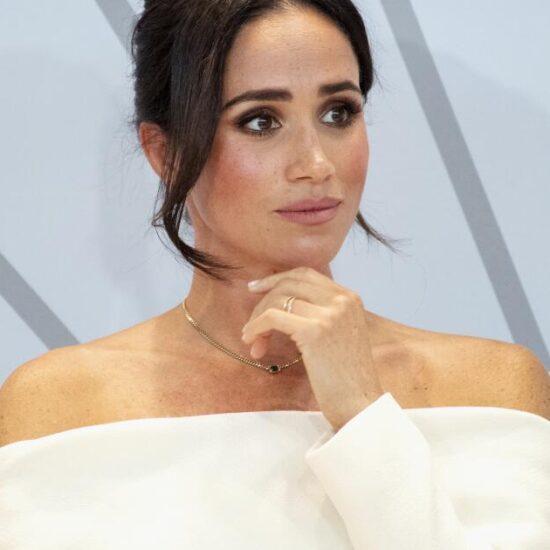
I reckon there are more ideas per second of screentime in “Elemental” than any other Pixar movie to date. So why does this imagination-teasing opposites-attract rom-com feel like a misfire?
No one can accuse director Peter Sohn (“The Good Dinosaur”) or his team of under-thinking the ultra-creative studio’s latest high-concept feature, which takes the four elements as identified by various ancient cultures — Fire, Water, Earth and Air — and reimagines them as uneasy neighbors in a crowded modern metropolis. But fun as it can be to soak in the movie’s cheeky sense of detail (from flame-retardant costumes to blink-and-you-miss-them background puns), the whole scenario seems forced: so much world-building to tell a story better suited to flesh-and-blood human characters.
In its over-designed, nuevo-New-York way, Element City feels an awful lot like Zootopia, but with gelatinous blue blobs (Water) and glowing orange torch-people (Fire) in place of animal species. Just as tensions arose between predators and prey in Disney’s dealing-with-differences allegory, even a toddler will get why it’s tough for Fire and Water to be friends: If one doesn’t accidentally extinguish the other, then the relationship’s bound to get uncomfortable once it reaches a boil.
Naturally, fear of either option poses a problem for lava girl Ember (voiced by Leah Lewis) and her aquatic new acquaintance, Wade (Mamoudou Athie), who meet when a pipe bursts in the basement of her father’s shop. Conventional wisdom says they can’t be together, further complicated by the expectations of Ember’s immigrant parents, Ernie (Ronnie Del Carmen) and Cinder (Shila Ommi), who expect their daughter to take over the family business.
The metaphor here is clear: Plenty of parents pressure their kids to partner up within their race or religion (“Marry Fire!” Ember’s grandmother insists on her deathbed), whereas Sohn wants to show that the alternative needn’t be a bad thing … which every child weaned on American TV and movies has heard a million times already. The message may be obvious, but it’s a little tricky to follow quite how Element City is supposed to correspond to the real world, since there are practical reasons these different characters can’t mix that no amount of rainbows and butterflies can fix.
By far the most volatile of the elements, Fire — flickering hot-heads who incinerate practically everything they touch — stays sequestered in the ghetto, where these highly combustible characters can smolder safely. Water tends to prefer the posh high-rises, flowing wherever it pleases. Those characters tend to be more sensitive, crying jets of tears at the slightest provocation. We see less of Earth and Air, who have almost nothing to do. The former look like dung-beetle balls, with stone noses and greenery sprouting from all parts of their brown-dirt bodies. Air people are shaped like cotton-candy clouds and dissipate on contact — close cousins with fluffy gray Gus from Sohn’s 2009 short “Partly Cloudy.”
Best known to Pixar fans as the employee who inspired the Russell character in “Up,” Sohn has a very particular aesthetic, different from the studio’s other directors, that plays funny tricks with characters’ proportions — which is doubly weird when they’re made of fluid, flame or puffs of smoke. It’s often said that Pixar doesn’t have a house style, but there’s a signature touch, evident from the care put into individualizing every background character, that makes “Elemental” instantly recognizable as coming from the studio that made “Inside Out” (where human emotions were the heroes) and “Soul” (in which death was just the beginning).
The project follows in the same abstract conceptual vein as those two films — standouts not only in the Pixar oeuvre, but 21st-century animation overall — though “Elemental” lacks the intuitive story logic that made them such original toons. Maybe it’s because no one thinks of the world in terms of “elements” (any more than they do the body’s “four humors”), the outdated nature of which seems at odds with the cutting-edge city and its computer-generated inhabitants.
For the longest time, Pixar’s formula involved letting directors pick a part of the world that interested them — à la Mexico in “Coco” or France for “Ratatouille” — and then appropriating as much culture as they could into the finished product. That was back when only the original “brain trust” (all white men) got to make features. To balance that out, Pixar has been grooming new voices through its shorts program, encouraging artists of different backgrounds to explore their heritage (as in “Sanjay’s Super Team” and “Bao”).
That mentality extends to the latest wave of Pixar originals (one-offs like “Luca” and “Turning Red,” breaking up a slate thick with sequels), in which the studio wisely encourages those same directors to get personal. This movie is no exception, drawing from Sohn’s second-generation immigrant status. Much of what works about the film is informed by his experience, and that of other Pixar employees.
The most emotional moment of the film occurs between Ember and her father, when the fiery young woman (who can melt glass with her hands and wants to be an artist) admits wanting to do something else with her life, and he tells her, “The shop was never the dream. You were the dream.” It’s a great scene — better than the set-piece where Ember and Wade visit an underwater flower garden together, or their first date, which becomes a kind of elemental fireworks display — and that’s because it seems to come from real life.
The element element, on the other hand, corresponds to practically nothing children know or recognize about the natural world. Instead of giving them a deeper understanding of Fire, Water, etc., the over-complicated premise creates all sorts of confusing new rules for them to learn — rules which don’t really apply outside the film. “Elemental” is so elaborate and calls for so much exposition that the briskly paced movie is still trying to shoehorn essential backstory into the film’s final reel. Sohn should have made the plot simpler, not faster. There’s poetry and soul here, but both are watered down by how much the movie seems to be multitasking. With Pixar, sincerity is elemental. The rest risks distracting from what really matters.











